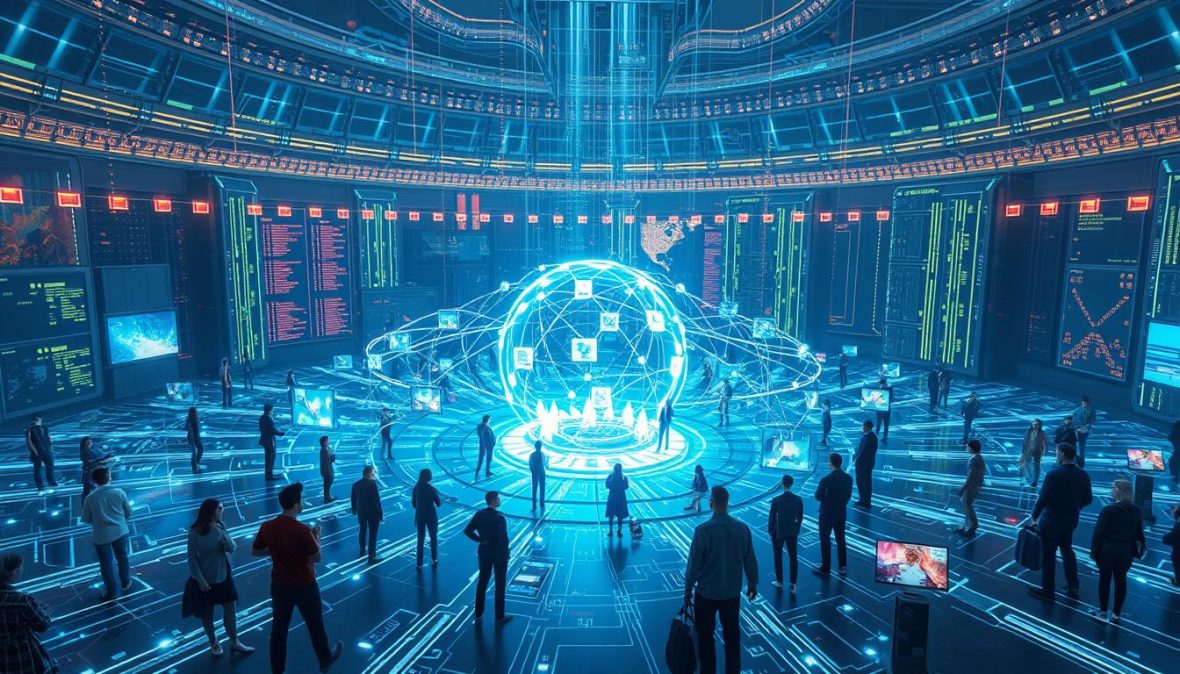Exploring Meta Web3 Platforms: The Future of Web

The global Metaverse market is projected to grow from $47.48 billion in 2022 to $678.7 billion by 2030, signaling a major shift towards Web3 and metaverse technologies. This article explores the key aspects of Meta Web3 platforms and their potential to reshape the digital landscape.
Introduction to Meta Web3 Platforms
Meta Web3 platforms represent the next evolution of the internet, focusing on decentralization, user empowerment, and seamless virtual experiences. Unlike traditional web architectures, Web3 utilizes blockchain technology to create interoperable virtual worlds that leverage VR and AR technologies.
Key features of Meta Web3 platforms include:
- Decentralized infrastructure
- User-owned digital assets and identities
- Interoperability between virtual spaces
- Integration of cryptocurrencies and tokenomics
Importance of Decentralized Applications (dApps) in Web3
Decentralized applications (dApps) play a crucial role in the Web3 ecosystem by providing:
- Enhanced user privacy and data control
- Reduced reliance on centralized authorities
- Transparent and tamper-resistant transactions
- New economic models and incentive structures
Popular dApps span various sectors including decentralized finance (DeFi), gaming, social media, and digital marketplaces.
Role of Blockchain Technology in Web3
Blockchain serves as the foundational technology for Web3 platforms, enabling:
- Decentralized consensus and data storage
- Secure and transparent transactions
- Tokenization of digital and real-world assets
- Smart contract functionality
NFT Marketplaces: The New Frontier
NFT (Non-Fungible Token) marketplaces have emerged as a key component of the Web3 ecosystem, facilitating:
- Trading of unique digital assets
- Proof of ownership for virtual goods
- New revenue streams for creators
- Integration of digital assets into metaverse experiences
Smart Contracts: Automating Trust
Smart contracts are self-executing agreements deployed on blockchain networks, offering:
- Automated and trustless transactions
- Reduced intermediaries and associated costs
- Programmable business logic and workflows
- Enhanced transparency and auditability
Decentralized Finance (DeFi): The Future of Financial Systems
DeFi protocols leverage blockchain and smart contracts to create open financial services, providing:
- Permissionless access to financial products
- Automated market-making and liquidity provision
- Yield farming and innovative investment strategies
- Decentralized governance and protocol upgrades
Building the Crypto Ecosystem
The broader crypto ecosystem supporting Web3 platforms includes:
- Cryptocurrency exchanges and wallets
- Layer 1 and Layer 2 scaling solutions
- Oracles for off-chain data integration
- Decentralized storage networks
- Identity and reputation systems
The Journey of Web3 Development
Web3 development presents unique challenges and opportunities:
- Learning new programming languages and frameworks
- Addressing scalability and user experience issues
- Navigating regulatory uncertainties
- Fostering interoperability between different blockchain networks
The Promise of a Decentralized Web
The vision of a fully decentralized web powered by Web3 technologies aims to:
- Empower users with true ownership of their data and digital assets
- Create more equitable and censorship-resistant online spaces
- Enable new forms of collaboration and value creation
- Reduce the dominance of centralized tech giants
As Meta Web3 platforms continue to evolve, they have the potential to fundamentally reshape how we interact, transact, and create value in the digital realm. While challenges remain, the growing ecosystem of developers, investors, and users is driving rapid innovation in this space.
Conclusion
Meta Web3 platforms represent a paradigm shift in internet architecture and user empowerment. As the technology matures and adoption grows, we can expect to see transformative applications across various industries. To stay informed about the latest developments in Web3 and metaverse technologies, continue exploring reputable sources and engaging with the vibrant Web3 community.
